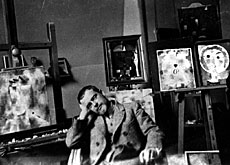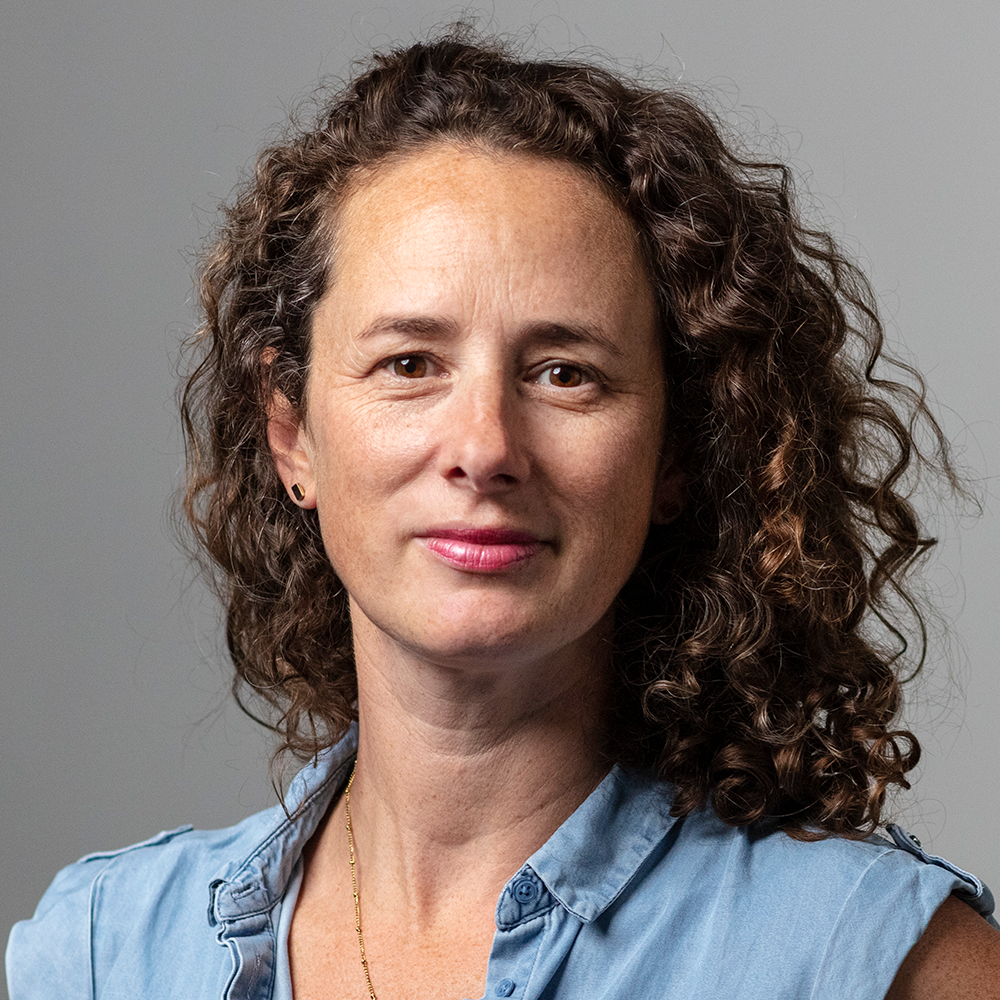Klee and the Bauhaus

When Klee arrived at the Bauhaus school in Weimar, Germany in 1921 to take up a teaching post as "Meister", he was already a famous avant-garde artist.
The school, whose motto was “art and technology – a new unity”, was charged with producing a new guild of craftsmen, in the words of founder, architect Walter Gropius.
Socialist in nature, the institute aimed to “raise the arrogant barrier between craftsmen and artists”, according to Gropius.
During the early years of the Bauhaus, an artist was consigned to a craftsman, the idea being that they were two halves of a whole – the former would teach the formal course content, the other the practical.
This is where Klee the artist fitted in, teaching first bookbinding and later taking charge of the stained glass and mural painting workshops.
His new appointment forced him to order his thoughts on the theoretical aspects of creating art.
Prior to joining the Bauhaus, his considerations were of a private nature, contained in his diaries and letters addressed to his wife, Lily, a talented pianist who was frequently away from home on musical tours.
Conscientious tutor
Wolfgang Thöner, an academic with the Bauhaus Foundation in Dessau, told swissinfo that Klee was a conscientious tutor.
“He prepared for his classes in a very detailed way, perhaps like no other artist teaching at the Bauhaus,” said Thöner.
But the reactions from Klee’s students to his teaching were mixed.
“Klee researchers agree on one thing: his teaching was intellectually demanding. Some students couldn’t get to grips with it but many others really enjoyed it and got a lot out of it,” Thöner said.
Another characteristic of Klee’s teaching style was to stress that his way was not the only way.
“He emphasized how he came to certain decisions and was not dogmatic, unlike other Meisters,” Thöner explained.
Theories
The theories which he developed during this time were sometimes apparent in his own art.
“He had a dynamic understanding of form and he systematically developed ‘templates’, which can be seen in his ‘square paintings’,” said Thöner.
There is, however, evidence to suggest that Klee did not take his teaching commitments seriously.
He would sometimes not show up for classes at all and did not notify his students or colleagues.
During such times, pleas from the Bauhaus to return to Dessau fell on deaf ears.
Klee’s attitude, signalling that his art took precedence, is apparent in a response to one of these requests: “First and foremost I am a working artist…”
Bourgeois life
The Dessau years allowed Klee and his family to enjoy the comforts of the upper middle classes, such as a good salary, a respectable job and a spacious house with a large studio, designed by Gropius.
“Klee always wanted to lead a bourgeois existence and he reached an apogee in his personal life in Dessau,” said Thöner.
Klee was proud of the professor-like title he held at the Bauhaus and the privileges that came with the job.
When the Bauhaus found itself in financial difficulties in the late 1920s, Gropius asked him to take a pay cut but Klee flatly refused. At one point, he was the highest paid Meister.
“Of course, this was a contradiction – here was the self-stylised avant-garde elusive artist striving for [bourgeois-like] recognition,” added Thöner.
Thöner also believes that Klee was so content in Dessau that he would have liked to have spent the rest of his life there.
Clouds
However, clouds were beginning to form on the horizon. Klee was finding it increasingly difficult to reconcile his own artistic ideals with those of the Bauhaus.
Writing to Lily in 1928, he explained: “Demands from both within and without are so great that I lose all feeling of time… My bad conscience follows me…”
Klee decided to leave Dessau, and the Düsseldorf Fine Arts Academy offered him a post in 1930.
A year later, he took up the new position, leaving his family behind in Dessau. They were due to move in 1933, after he had found a suitable flat, but were overtaken by historical events.
The Nazis had risen to power in Germany during the same year and the writing was on the wall for Klee who, as a modern artist with leftist leanings, was no friend of the regime.
Just days before his family was set to join him, Klee was dismissed with immediate effect from the academy, whose new director was a self-avowed follower of National Socialism.
In December 1933 the Klee family left Germany – after it became clear there was no future for them under the Nazi regime – and moved back to Switzerland.
swissinfo, Faryal Mirza
1921: Klee joins the Bauhaus Weimar as a “Meister”.
1926: Bauhaus moves from Weimar to Dessau after the Thuringian government cuts its subsidy.
1926: The Klee family move into a “Meisterhaus”, a purpose-built semi-detached house; their neighbour is Russian-born painter Wassily Kandinsky.
1930: The Fine Arts Academy in Düsseldorf offers Klee a post, which he accepts.
1933: The Klee family moves back to Switzerland.
The Bauhaus Academy existed from 1919-33 in Germany and its motto was “art and technology – a new unity”.
Its founder was the architect Walter Gropius, who wanted to produce a new guild of craftsmen, who would “raise the arrogant barrier between craftsmen and artists”.
The Bauhaus had three homes (in the following order): Weimar, Dessau and Berlin.
The downfall of the Bauhaus was due to the rise of National Socialism in Germany.

In compliance with the JTI standards
More: SWI swissinfo.ch certified by the Journalism Trust Initiative








You can find an overview of ongoing debates with our journalists here . Please join us!
If you want to start a conversation about a topic raised in this article or want to report factual errors, email us at english@swissinfo.ch.